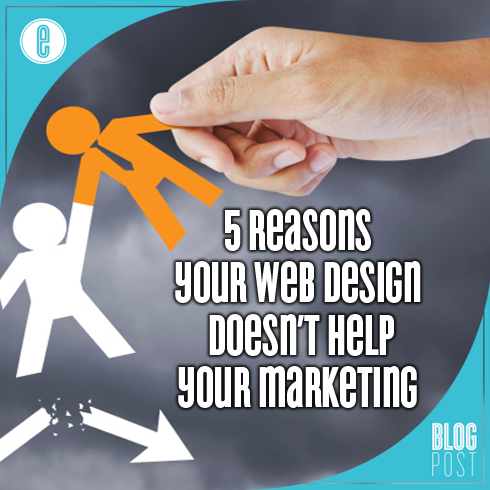
Whether you are marketing products, services, ideas, or even yourself, your website is often your only chance to establish your digital first impression. Not only does it tell your site visitors a great deal about you and what you do, but it also provides a wealth of data to search engines that will influence your site’s position in search results.
5 Reasons Your Web Design Doesn’t Help Your Marketing
When it comes to web design, the success or failure of your website is measured not only by what you do, but also what you don’t do. Here are a few mistakes you can avoid to increase you website’s potential for success:
1. Failure to incorporate keyword research into your web design strategies and include content-specific keywords in a contextually relevant format.
Keywords are no longer relegated to a couple of words that are specific to your product or service. They now include geographically specific keywords, long-tail keywords, and other very specific words and phrases to more precisely match how the average Internet user is wording their searches.
2. Adding too much fluff and not enough filler.
Videos and images are powerful parts of a properly designed and optimized website, but including too many of either one, or doing so in the “wrong” way, can be devastating to your web design tactics. Less is truly more when you are designing for marketing purposes, because the more clutter a visitor has to wade through, the less likely they are to spend time on your site.
3. Hiding your call-to-action or making it difficult to find.
Whether you want a site visitor to sign up for a newsletter, download a free “how to” document, watch a video, make a purchase, or visit your blog, you need to make sure your web design process provides a clear navigational path toward that result. Calls-to-action should stand out amid all the other content on your webpages.
4. Duplicating page content.
Not only do site visitors want to avoid the “same old, same old,” so do search engines, and you can actually have your websites penalized for using cookie-cutter content in your web design. Each page should be unique and focus on one particular product, service, idea, or theme.
5. Neglecting social media or not including your social media channels as part of your overall web design strategy.
Social media importance in brand recognition and product or service visibility has grown exponentially in the past few years, and leaving that out of your web design strategies can leave a virtually goldmine of potential untapped.
As part of your web design process, one of the first steps you should take is to define the goals you wish to achieve with your website. Is it primarily for marketing purposes, delivering information, establishing viable leads, or getting higher conversion rates? Once you’ve decided exactly what you want your website to do for you, the web design process should follow a clear and logical route toward achieving those goals. When you know where you want your website to go, the task of getting there is much less challenging.

Envision Creative Group is a marketing and creative services agency that specializes in website design and development.
-FINAL(01-00)-White&Blue-01.svg)



